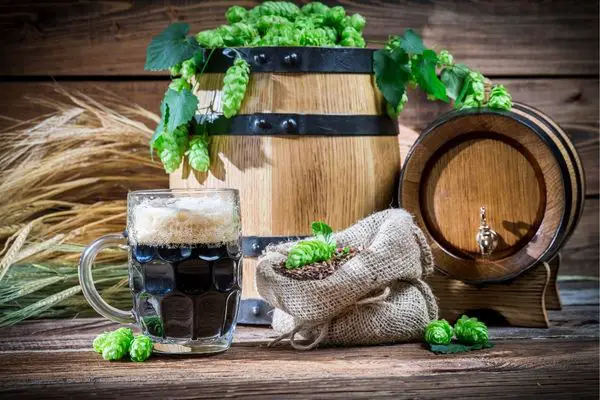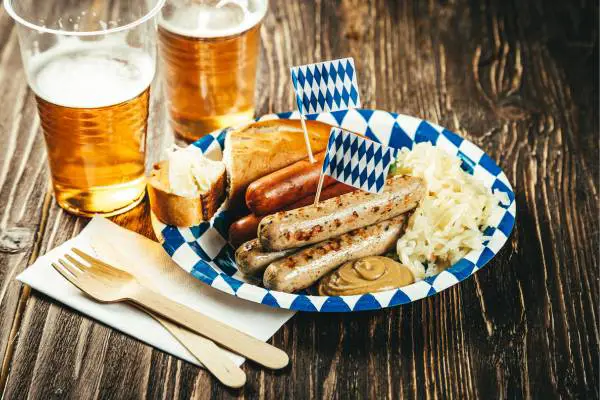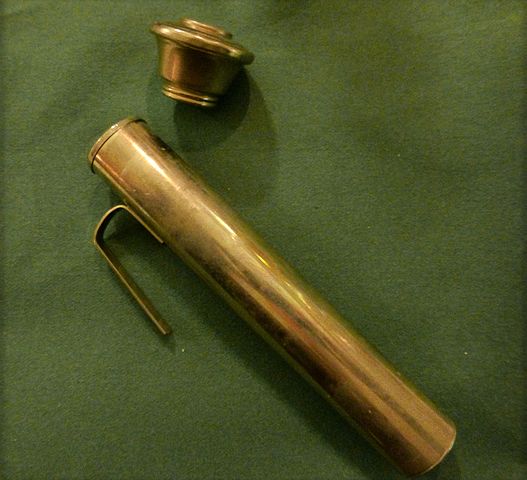Do you ever wonder why some people prefer their beer warm? It may seem odd, but there’s more to it than meets the eye.
From historical and cultural influences, to taste preferences and even potential health benefits – warm beer has its unique reasons for being enjoyed by people in some European countries like England, Germany and Belgium.
There are several reason why these European countries sometimes prefer their beer warm:
- It is tradition.Warm beer has been around for centuries due to historical and cultural traditions, as well as the science behind beer brewing.
- Certain types of beer, such as English ales and Belgian ales, are best served warm to fully appreciate their flavors.
- Drinking warm beer can have advantages like bringing out more flavors and aiding in digestion, but it also has drawbacks like being less refreshing and potential health risks if stored improperly.
- Craft beer enthusiasts, older generations, people who enjoy traditional brewing methods, and those with personal preference or convenience are among the groups of people who drink warm beer.
Lets dive further into (the cup of warm beer!) and figure out what it’s all about!
My First Encounter With Warm Beer
It was my first time visiting England, and I was eager to experience the local culture and traditions. I had heard about the famous English pubs and their warm beer, and I was curious to try it for myself.
I found a cozy pub in a quaint little town and ordered a pint of ale. As I took my first sip, I was surprised by the warmth of the drink. It was not what I was used to back home, but I decided to embrace the local custom and enjoy the unique taste.
It was a stout type ale heated to around 110F.

I struck up a conversation with some locals at the bar, and they explained to me the history and importance of warm beer in English culture.
They told me how it was traditionally brewed and served, and how it was meant to be savored slowly, allowing the complex flavors to develop.
As the night wore on, I found myself enjoying the warm, comforting feeling of the ale in my belly, and the friendly chatter of the locals. It was a truly authentic English pub experience, and one that I will always remember.
Historical And Cultural Context
Throughout history, warm beer has been the predominant method of beer consumption. Before modern refrigeration and temperature controls, people stored their brews in cellars or underground locations, where temperatures would naturally maintain a cool but not cold environment.
As a result, individuals who lived in such times had no other option but to drink their beer at what we now refer to as “cellar temperature,” which is around 50-55 degrees Fahrenheit (10-12 Celsius).
European countries like the United Kingdom and Germany have long-standing traditions of drinking warmer beers due to their historical context. British alehouses served cask-conditioned ales straight from the cellar without additional cooling methods like ice or refrigeration units.
Meanwhile, Germans used Bierwärmer – metal rods heated over an open flame – to gently warm up beers before serving them during colder months.
Science Behind Warm Beer
Understanding the science behind warm beer is key to appreciating why some people prefer their beer at a higher temperature. Beer contains many complex chemical compounds that play a significant role in its flavor profile, and these compounds react differently depending on the temperature of the beer.

As beer warms up, its flavor profile changes. The warmer temperature allows for more subtle notes to be detected while also making bitter flavors more pronounced. Additionally, warmer temperatures make it easier to detect fruity or spicy notes that may get lost at colder temperatures.
While heating up most beers above room temperature is not recommended due to potentially damaging chemical reactions between the alcohol and other constituents found within the drink but with appropriately heated device such as Bierwärmer (beer-warmers) used in central Europe.
They were popular starting from 18th century Germany since warming up stronger beers was known for a long time under name “mulled wine“(Glühwein).
Types Of Beer Best Served Warm
Some types of beer are best served warm, allowing for the full range of flavors and aromas to be enjoyed.

Here are some examples:
1. English Ales: These malty beers are often served at room temperature, allowing for the fuller expression of their flavors.
2. Belgian Ales: Many Belgian styles benefit from being served slightly warmer than usual, including Dubbels and Tripels.
3. Stout and Porter: The roasted notes and chocolate flavors in these beers come out more at warmer temperatures.
4. Barleywine: The high alcohol content in this style can create a warming sensation, making it an ideal choice for cooler weather.
5. Winter Warmers: These seasonal beers are brewed specifically to be enjoyed during colder months, and serving them warm can enhance their comforting qualities.
Remember, not all beers should be served warm – it’s important to know which styles benefit from this approach.
The Benefits And Drawbacks Of Drinking Warm Beer
Drinking warm beer has its advantages such as bringing out flavors and aromas, aiding digestion, and warming the body on a cold day but it also has drawbacks including less refreshing taste and potential health risks.
Advantages: Brings Out Flavors And Aromas, Improves Digestion, Warms The Body On A Cold Day
One of the biggest advantages of drinking warm beer is that it brings out more flavors and aromas in the brew. When served too cold, many beers lose some of their subtleties and complexities.
This is particularly true for darker beers like stouts or porters which can develop deeper notes when warmed up slightly. Another benefit of drinking warm beer is that it’s known to aid digestion.
In fact, in the past, heated ale was often perceived as being more healthful than cold beer. Finally, on a chilly day, nothing warms you up better than a nice pint of room temperature or slightly warmed-up beer that helps to heat your body from within while enjoying its delicious taste and aroma.
By serving warm beer at appropriate temperatures (usually ranging between 45-70 degrees Fahrenheit) in designated glassware alongside complimentary food pairings enhances overall taste experiences greatly! It’s no wonder why so many microbrew enthusiasts point out that drinking warmer beer enhances its flavor profile substantially.
Disadvantages: Less Refreshing, Potential Health Risks
While some people prefer their beer served warm, there are a few disadvantages to drinking it at room temperature. One disadvantage is that warm beer can be less refreshing than its crisp and cold counterpart, which could be a turn-off for those looking to quench their thirst.
Additionally, there are some potential health risks associated with drinking warm beer. When stored improperly or left out too long, bacteria can ferment the beer at an accelerated rate, potentially causing stomach discomfort or illness.
How To Enjoy Warm Beer
To fully appreciate the unique flavors and aromas of warm beer, it is important to serve it at an appropriate temperature, select proper glassware, and pair it with the right type of food – read on to discover how.
Appropriate Serving Temperatures
To truly enjoy warm beer, it’s important to serve it at the right temperature. Generally, ales and stouts are best served between 50-55 degrees Fahrenheit while lagers and pilsners should be chilled slightly lower at around 40-45 degrees Fahrenheit.
But for warm beer advocates, this temperature can be as high as 140F (60C)! But usually around 110F (40C) is preferred.

It’s also important to use appropriate glassware for each style of beer as different glasses help release various aromas and flavors.
Glassware Selection
Choosing the right glassware is an essential part of enjoying beer, whether it’s cold or warm. Different types of beers require specific glass styles to enhance their flavor and aroma profiles.
For instance, a pint glass is ideal for British beers known for their malty and nutty flavors while Belgian lambics are best served in tulip-shaped glasses to capture their fruity aromas.
When it comes to warm beer, using a ceramic mug or stein can help retain the heat better than thin-walled glasses. Additionally, thicker glasses with wide rims allow drinkers to savor more aromatics as they bring the nose closer to the surface of the beer.
Pairing With Food
Pairing your warm beer with certain foods can enhance your drinking experience further. A good rule of thumb is that bitter beers pair well with fatty meats like burgers or sausages while sweet beers complement desserts perfectly.
Here are some suggested food pairings with warm beer:
1. Dark Ales – Pair with hearty foods such as stews, roasted meats, and aged cheeses.
2. Wheat Beers – Pair with light fare such as salads, seafood, and citrusy dishes.
3. Belgian Ales – Pair with savory dishes like mussels, sausage, and charcuterie boards.
4. German Lagers – Pair with spicy foods such as sausages and curries.
5. English Ales – Pair with pub classics like fish and chips, bangers and mash, and shepherd’s pie.
6. IPA’s – Pair with bold flavors such as barbecue or spicy foods.
Remember to serve your warm beer at the appropriate temperature to bring out its unique flavors when pairing it with food.
Who Drinks Warm Beer And Why?
Craft beer enthusiasts, older generations, people who enjoy traditional brewing methods and those with personal preference or convenience opt for room temperature beer.
Craft Beer Enthusiasts
Craft beer enthusiasts are a segment of the population that prefers unique and interesting beer flavors over mass-produced options. They often seek out small-batch, locally brewed beers and enjoy experimenting with different styles and ingredients.
Some craft beer enthusiasts also appreciate warmer temperatures for their favorite brews, as it can enhance the complexity of flavors in a way that colder temperatures cannot.
For example, stouts and porters tend to be enjoyed at slightly warmer temperatures to bring out the roasty and chocolatey notes, while IPAs benefit from being served cooler to showcase their hoppy bitterness.
Craft beer enthusiasts might also choose specific glassware for each type of beer to ensure optimal taste and aroma experiences.
Older Generations
Many older generations of beer drinkers prefer to have their beer at room temperature. This is often because they grew up in a time when refrigeration was not common, and thus, drinking warm beer was the norm.
Additionally, some older individuals believe that cold beverages are harder on their stomachs and prefer the milder sting of warm or room-temperature drinks instead. In fact, up until relatively recently, heated ale was often perceived as being more healthful than cold beer; Dr.
People Who Enjoy Traditional Brewing Methods
Tradition is an essential aspect of the beer-making process, and many people who appreciate traditional brewing methods are attracted to drinking warm beer.
These individuals often seek out breweries that still use traditional techniques to create unique and full-bodied brews with complex flavors.
For example, some small craft breweries specialize in creating non-carbonated and unfiltered beers that are best served at room temperature or even heated up.
Additionally, many of these beer enthusiasts prefer their drinks without added preservatives or artificial ingredients, making warm beer a more natural choice for them.
Convenience, Tradition, Personal Preference
For some people, drinking warm beer is just a matter of convenience. When you’re out camping or at an outdoor event where there’s no refrigeration available, it may be easier to grab a warmer can of brew than to keep searching for ice.
For others, tradition plays a role in their preference for warmer beer. In many parts of the world such as in Central Europe and England, this has been the way to drink beer from time immemorial.
Research suggests that serving certain types of beer slightly warmer can enhance its flavor without detracting from its refreshing qualities which makes sense considering that historically warmed ale was perceived as being better for one’s health than cold variants.
The Truth About Warm Beer
Contrary to popular belief, Europeans actually prefer their beer at cellar temperature and Central Europeans even ask for their beer to be warmed up on certain occasions.
Most Beer Is Not Drunk Warm – But Some Europeans Prefer It At Cellar Temperature
Contrary to popular belief, Europeans do not drink warm beer. In fact, they prefer their beer at cellar temperature which is typically between 50-55 degrees Fahrenheit.

This temperature range allows for the flavors and aromas of the beer to be fully appreciated without being too cold or too warm.
Central Europeans, on the other hand, may ask for their beers to be warmed up on certain occasions such as during winter festivals or when drinking darker brews like Bock beers.
Central Europeans Heat Their Beer On Occasion
Central Europeans have a unique beer culture where they occasionally heat their beer. In some regions such as Germany, Austria, and the Czech Republic, traditional taverns offer hot beer or Glühbier during winter months.
The beverage is warmed up with spices like cinnamon and served in heavy glass mugs to keep it warm for longer periods. Hot spiced beers are also brewed at home using homemade Bierwärmer, a device made specifically for heating beer bottles or cans evenly.
This tradition dates back centuries when heated ale was considered more beneficial for health than cold beer.
Hot Beer Is Mostly A Thing At Beer Festivals and In Folklore
Believe it or not, hot beer is a thing! In some regions of the world, such as Germany and Austria, people enjoy their beer heated up.

The traditional way to do this is by using a bierwärmer (beer warmer), which is essentially a metal rod that’s heated up by pouring boiling water into its hollow glass chamber before being inserted into the beer glass to warm it up.

Hot beer has been around for centuries and was often considered more healthful than cold beer due to its warming properties.
Even today, some people swear by hot beer as a remedy for colds and flu.
Conclusion
In conclusion, warm beer has been enjoyed for centuries and remains a popular choice among certain groups of people. While it may not be everyone’s preference, those who enjoy drinking their beer at warmer temperatures argue that it brings out more complex flavors and aromas.
Additionally, warm beer is believed to have some health benefits such as aiding in digestion and warming the body on cold days. Whether you’re a craft beer enthusiast or simply prefer traditional brewing methods, there’s no denying that temperature plays an important role in enhancing your overall beer-drinking experience.




